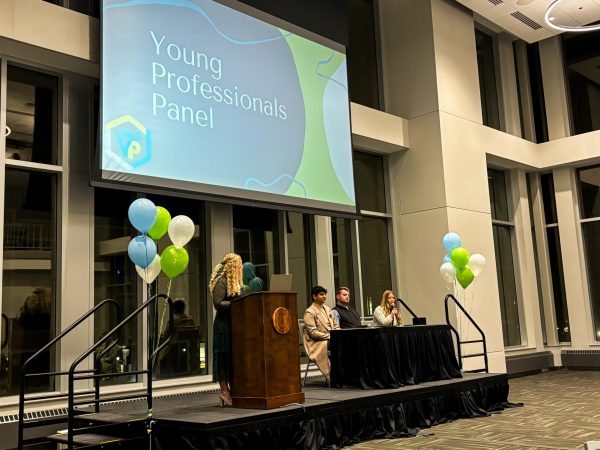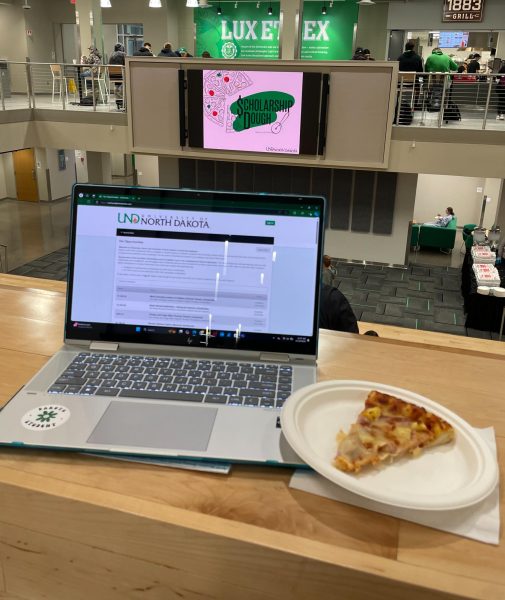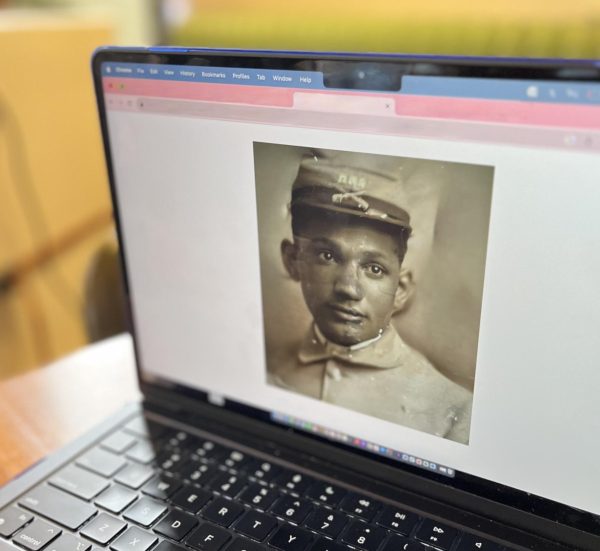On-campus fire statistics show need for safety
12 fires classified as “on-campus” in three years reveal trends in cooking mistakes, vandalism
Image courtesy of Google Earth.
In the past three years, UND has experienced a total of 12 fires in University housing, but none have happened yet in 2014. Fires are a rare occurrence for the campus because of strong safety efforts by staff, such as UND Environmental Health and Safety Technician Bob Johnson.
Although the recent death of UND student Matthew Heisler took place in off-campus housing, it is a reminder of the importance of proper fire prevention procedures.
“We take fire prevention very seriously,” Johnson said. “We want students to be safe until they graduate.” Johnson works closely with UND Associate Director of Safety Terry Wynne, who was a Grand Forks Fire Marshal for seven years and a firefighter for 11 years prior to that.
When fires do happen on campus, Wynne said it is usually due to carelessness of individuals.
“Very few fires start as accidents. People don’t often realize that what they’re doing can start a fire,” Wynne said.
Not only are on-campus fires a risk to the safety of students, but they can also be a costly occurrence. In the last three years, fire damage has added up to $7,832.19.
Common ways that people unintentionally start fires include wiring electrical cords incorrectly, leaving cooking unattended and smoking improperly. Wynne said fires are more likely to occur in the winter because people stay inside and use heating devices more than they would in other seasons. Record wise, on-campus fires are more likely to start in residential buildings, but they can happen anywhere.
Fires are usually put out immediately by an extinguisher, which doesn’t just mean a wall extinguisher — a sink, snow or even dirt can be used to stop a fire. Although putting the fire out is important, Grand Forks Fire Marshal Brandon Boespflug said it is smarter to get everyone out of the building first.
“The issue could be addressed with a fire extinguisher, but sometimes it is better to get out of the building and let us handle it,” said Boespflug, who works directly with the UND campus. “It is not fire that kills or hurts people — the smoke gets to you first. I like to compare it to a bonfire outside — if smoke gets in your face, you have other air to breathe, but imagine if you moved that fire to inside a room. You have no air for relief.”
If the fire department is called through either 911 or a fire alarm, the University Police Department gets there first in about two minutes to help with crowd control and evacuation. The fire department arrives at the scene in an average of four minutes.
“We have a fire station north of the Ralph, and we have to be out of that door within one minute,” Boespflug said. “Every station is manned 24/7 with no less than three people on a fire engine. There is never a day that goes by without fire station workers here, even in storms.”
The station serves not only the campus but the city too, so if one fire requires several hours of work, another shift is called into the station. Two fire engines are always brought in to a fire alarm call, and more can be summoned if needed.
Prevention
To stop fires from happening in the first place, Boespflug said students should think back to their elementary days when firefighters taught them fire safety. Students also should refrain from cooking or lighting candles when they are drowsy. Heat sources such as curling irons should be kept away from objects like paper or clothing that could catch on fire, and they should always be turned off immediately when no longer in use. He also urges students to get out of the building instantly if a fire alarm sounds, and treat each one as a real situation.
For both on and off-campus students, Boespflug emphasized the importance of having working smoke detectors.
“You lose the use of your eyes and nose while you are asleep, but your ears are still working.”
Batteries should be checked once a month, and changed at least every six months when clocks are switched for daylight savings time. His final piece of advice for students is to practice their escape plan so they know how to get out of the building in an emergency, because the smoke from a fire can make it difficult to see exits.
No matter how big or small a fire is, it is against the law to not report the incidence. Bob Johnson receives all reports for fires that happen on campus and uses the definition of a fire from the CLARE Act to classify if the incident was an “on-campus fire” or not.
For the past three years, the CLARE Act has also required Johnson to make information about fires in on-campus student housing facilities available to the public through an annual fire safety report. Fires occurring in off-campus residences, such as the recent fire involving UND student Matthew Heisler, would not be listed on these reports. Anyone can access the reports online.
Another main aspect of Johnson’s job is conducting inspections for all buildings on campus with Boespflug. Each building must be inspected at least once a year, but the number of buildings the two visit each week varies, depending on what other tasks they have to take care of first.
Sprinklers are not installed in every building on campus yet because of high expenses, but UND is working toward that goal. Any newly constructed building has to have one, so only the older buildings need to be updated. About half of the residence halls currently have sprinklers installed, and one goal is to have sprinklers in all residence halls in the next three years.
In addition to sprinklers, there are around 2,000 fire extinguishers on campus, which Johnson checks regularly. Smoke detectors and fire alarms are tested twice a year, and fire drills are required once per semester in residence halls. With these precautions and the intensive fire safety training for dining center workers and residence hall staff, Boespflug believes that UND’s efforts have made a difference.
“There is no way to tell how many fires we have prevented or how many lives we have saved,” Boespflug said. “But I know we are doing a good job.”
Emmy Erbes is a staff writer for The Dakota Student. She can be reached at [email protected].








